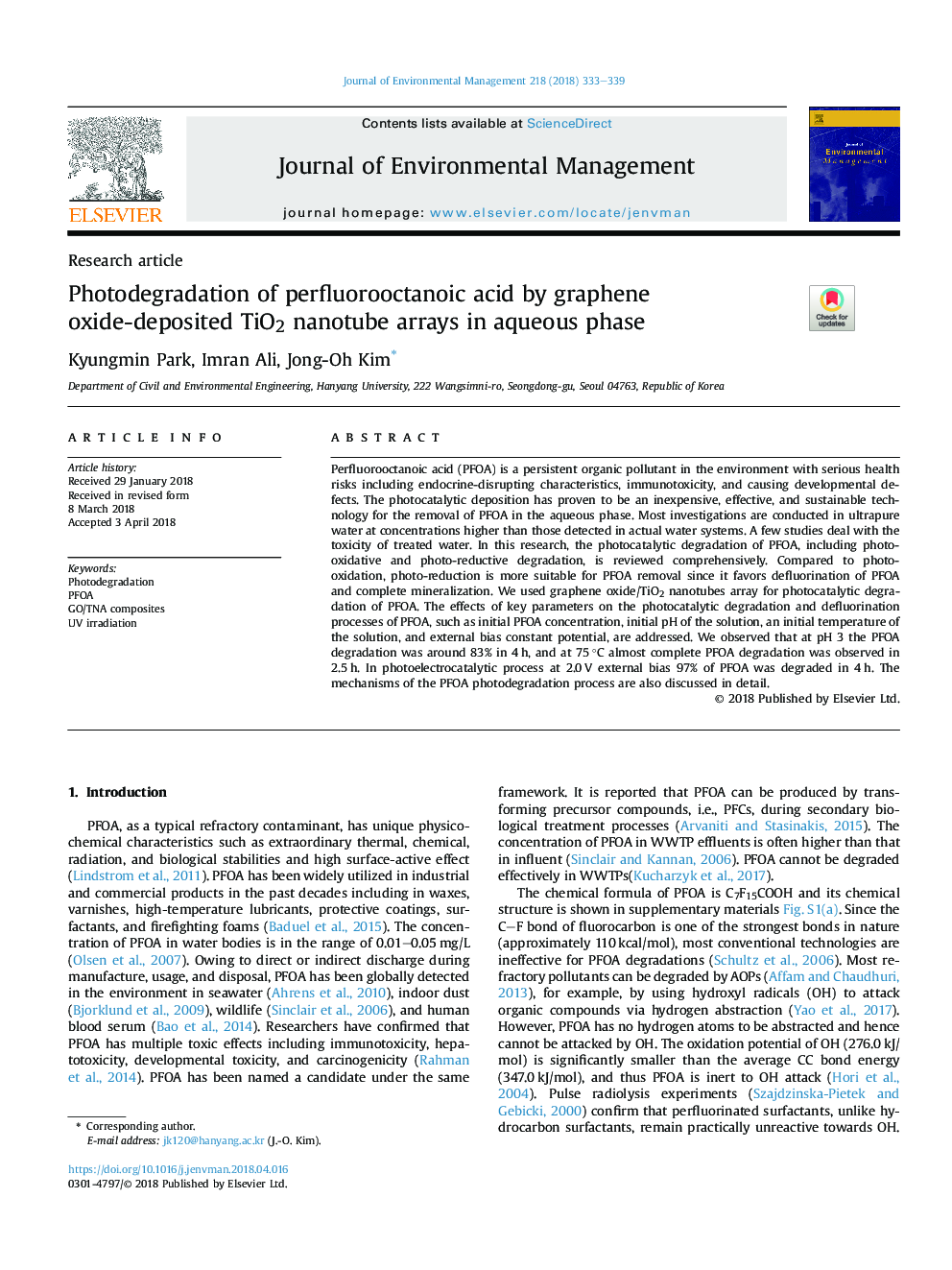| Article ID | Journal | Published Year | Pages | File Type |
|---|---|---|---|---|
| 7477017 | Journal of Environmental Management | 2018 | 7 Pages |
Abstract
Perfluorooctanoic acid (PFOA) is a persistent organic pollutant in the environment with serious health risks including endocrine-disrupting characteristics, immunotoxicity, and causing developmental defects. The photocatalytic deposition has proven to be an inexpensive, effective, and sustainable technology for the removal of PFOA in the aqueous phase. Most investigations are conducted in ultrapure water at concentrations higher than those detected in actual water systems. A few studies deal with the toxicity of treated water. In this research, the photocatalytic degradation of PFOA, including photo-oxidative and photo-reductive degradation, is reviewed comprehensively. Compared to photo-oxidation, photo-reduction is more suitable for PFOA removal since it favors defluorination of PFOA and complete mineralization. We used graphene oxide/TiO2 nanotubes array for photocatalytic degradation of PFOA. The effects of key parameters on the photocatalytic degradation and defluorination processes of PFOA, such as initial PFOA concentration, initial pH of the solution, an initial temperature of the solution, and external bias constant potential, are addressed. We observed that at pH 3 the PFOA degradation was around 83% in 4â¯h, and at 75â¯Â°C almost complete PFOA degradation was observed in 2.5â¯h. In photoelectrocatalytic process at 2.0â¯V external bias 97% of PFOA was degraded in 4â¯h. The mechanisms of the PFOA photodegradation process are also discussed in detail.
Keywords
Related Topics
Physical Sciences and Engineering
Energy
Renewable Energy, Sustainability and the Environment
Authors
Kyungmin Park, Imran Ali, Jong-Oh Kim,
